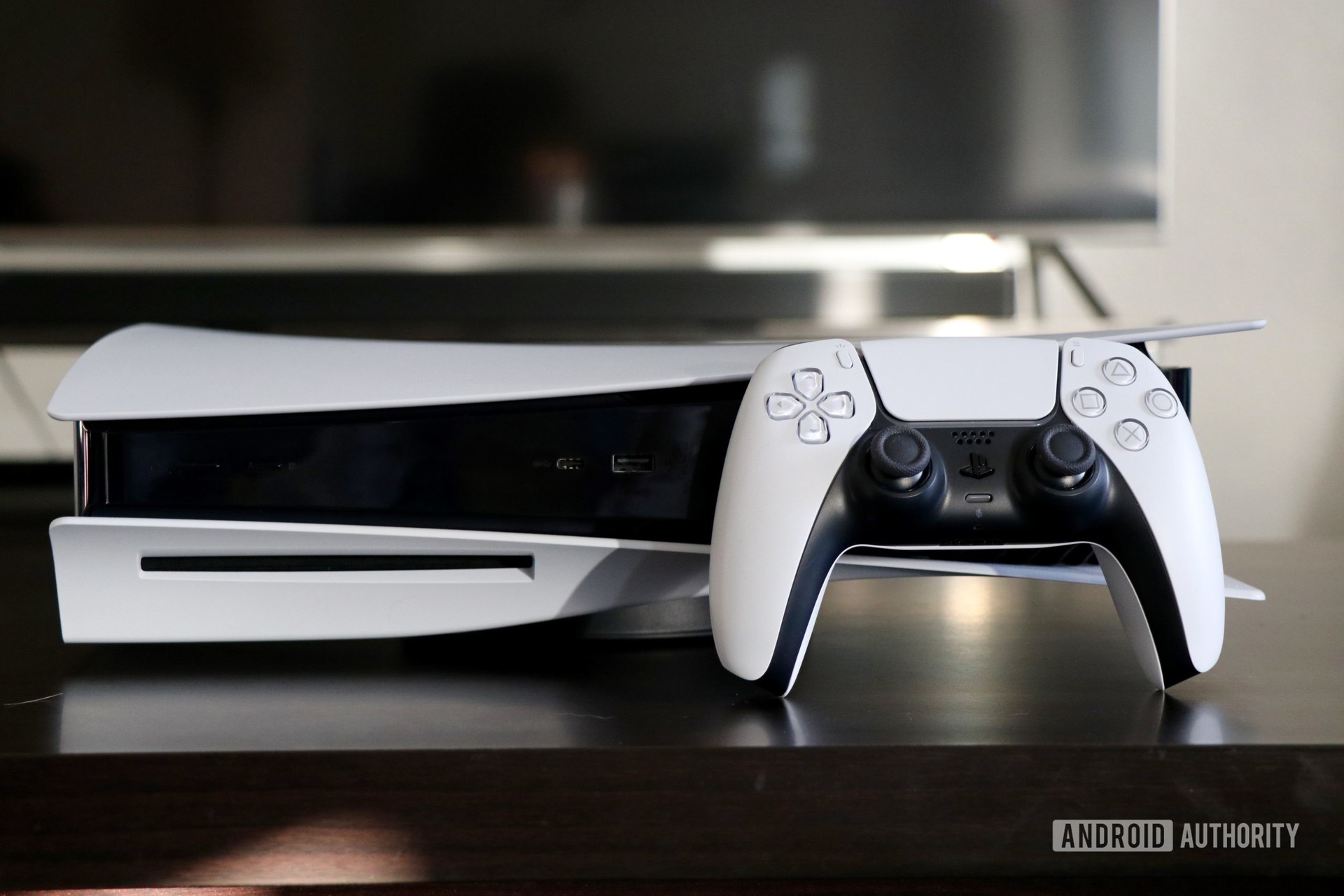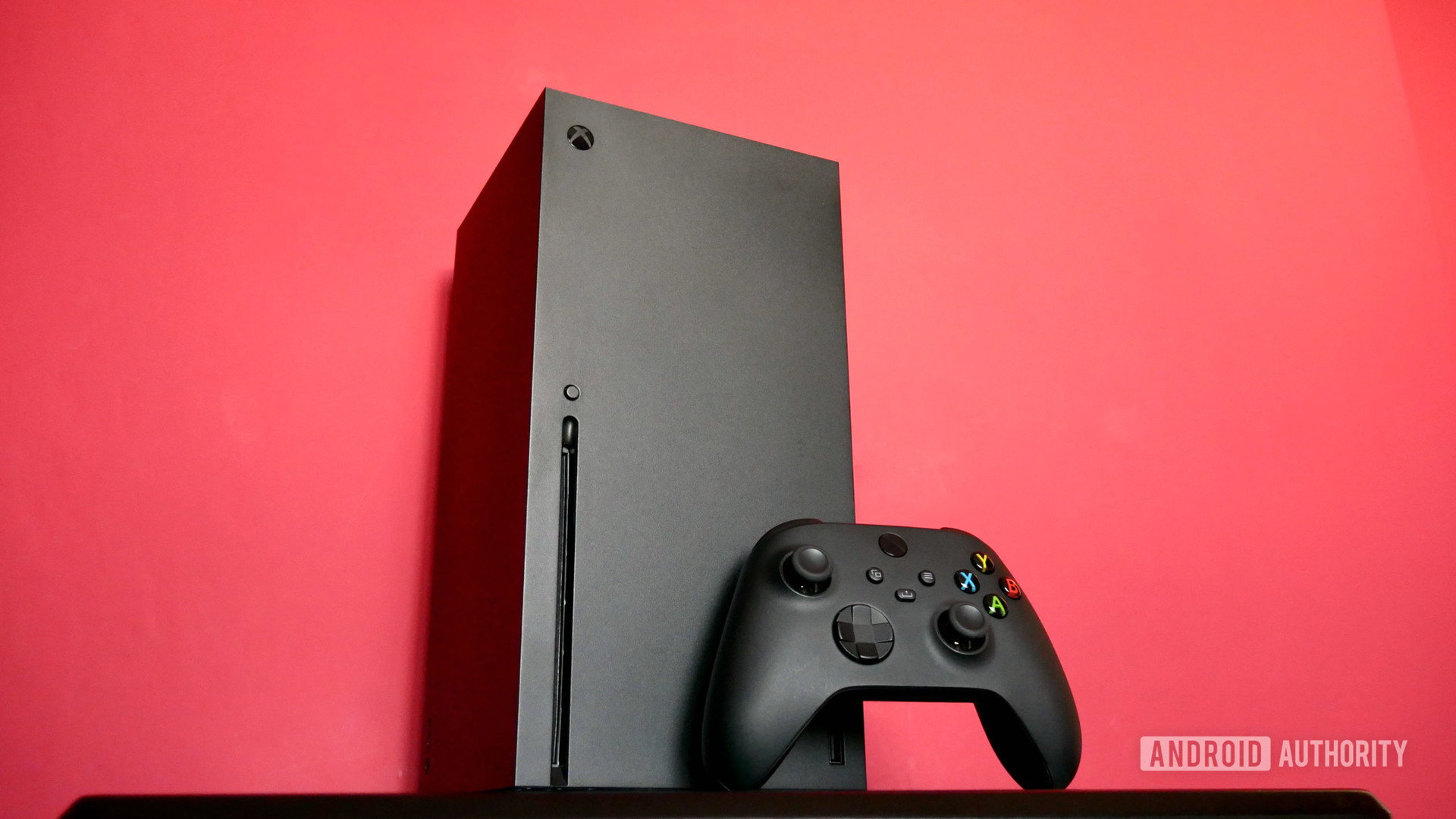Affiliate links on Android Authority may earn us a commission. Learn more.
PS5 vs Xbox Series X: Which next-gen games console should you buy?
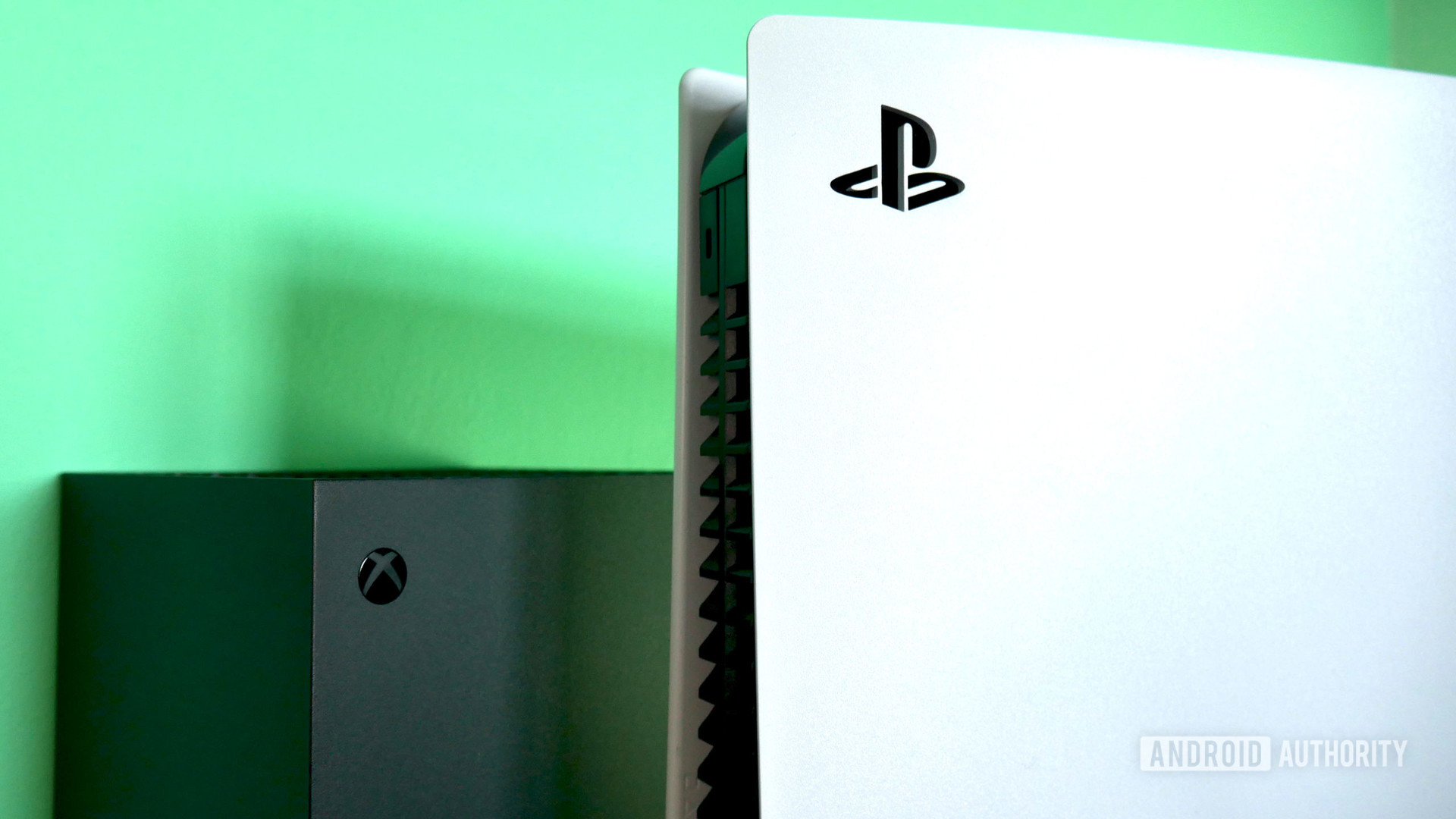
The ninth generation of gaming is here. The PS5 and Xbox Series X are the two most powerful home consoles ever made, but which system is right for you? That’s what we’re hoping you’ll find out by the end of this PS5 vs Xbox Series X comparison.
We’ve judged the PlayStation 5 and the Xbox Series X separately in our in-depth reviews. If you want a full breakdown of each console, check out the links below. But now it’s time for the big showdown between Sony and Microsoft’s new hardware. Is one console more powerful than the other? Which console has the best games? Which is the best value for money? Let’s dive in.
Our verdicts: Sony PlayStation 5 review | Xbox Series X review
PS5 vs Xbox series X: Design
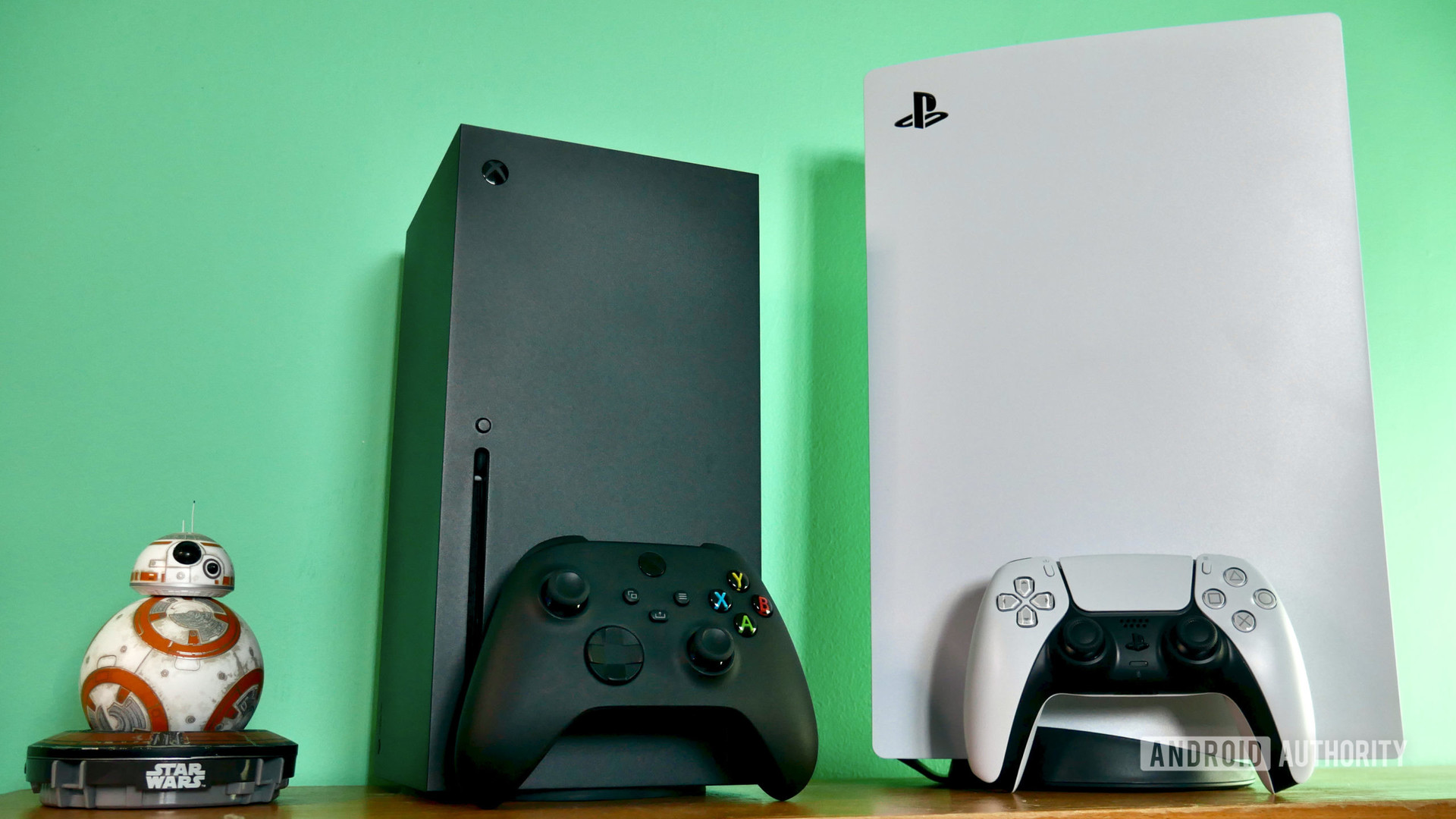
Sony and Microsoft’s consoles share a lot of traits, particularly under the hood. However, the overall look of each machine couldn’t be more different.
Where the PS5 shoots for panache thanks to its bright white, sci-fi-like aesthetic, the Xbox Series X is a simple, chunky, black cuboid. The Xbox Series X showcases a little bit of flair with its green-accented convex vent on the top, but the PS5’s curvy chassis is all flair. The PS5’s “wings” can also be removed, and Sony offers official interchangeable faceplates/console covers in different colors.
Sony and Microsoft's design teams have gone in two totally different directions.
One characteristic they do share is that they’re an awkward shape for entertainment setups. Unless you have a unit with massive gaps, the Xbox’s girth and PS5’s height will mean at least one will be a tight squeeze if placed horizontally. The PS5 just about fits in my cabinet, but the chubby Series X is a non-starter.
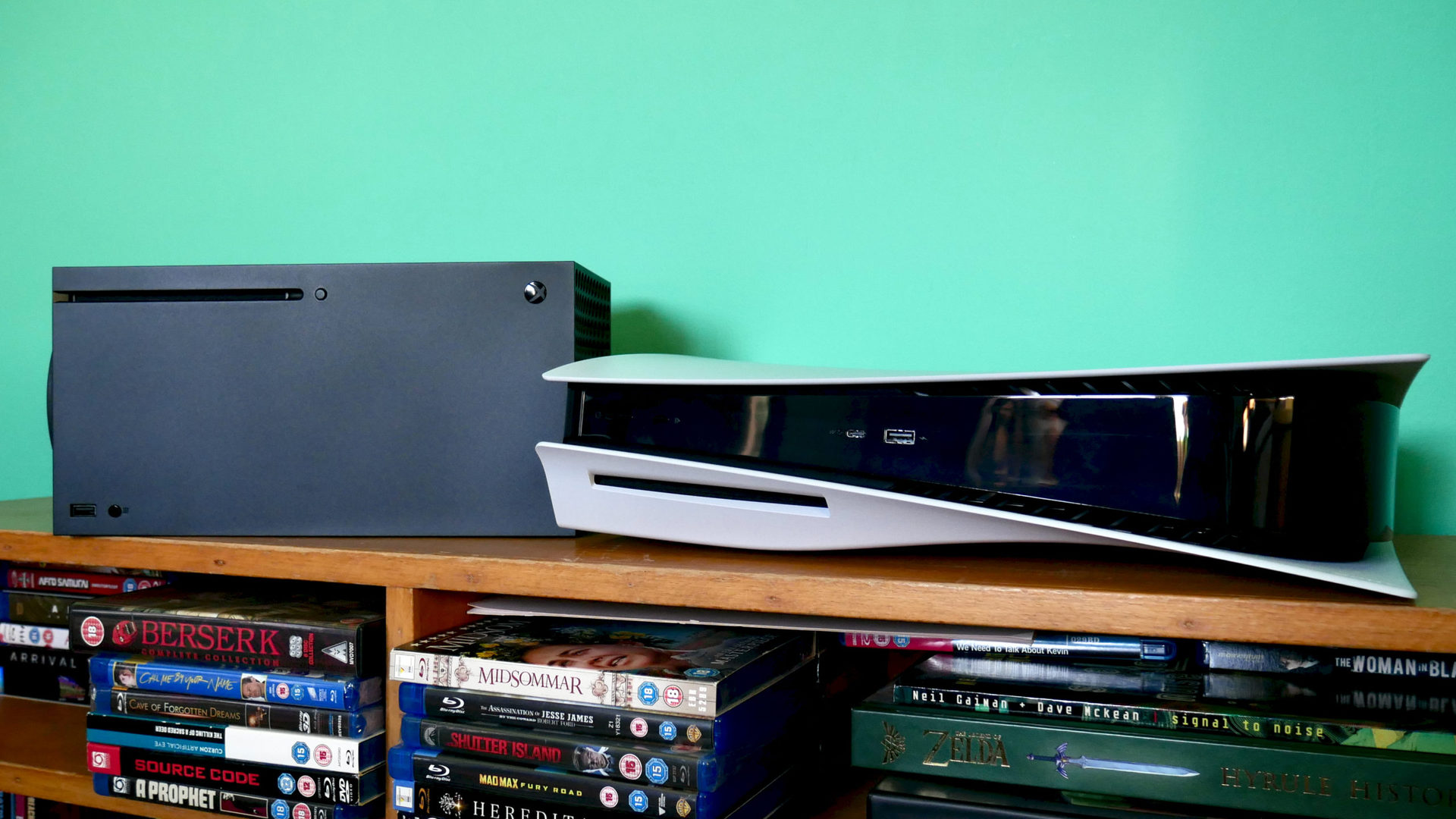
That said, both systems look frankly ridiculous when placed on their side. The Series X looks like it’s fallen over, and a horizontal PS5 just looks, well… wrong. They should be stood up proudly, especially if you want to ensure maximum heat dispersion.
Fan issues likely won’t arise until much later in the consoles’ life cycles, and both are quiet as a whisper when running shortly after launch. The non-digital PS5 model does kick up a fuss when you insert a disc, but it only lasts a few seconds.
As far as ports go, the two are essentially identical. You’re getting power, ethernet, two USB-A 3.2, and HDMI out ports on the back. You’ll find another USB-A port on the front, a 4K Blu-Ray disc drive, and power and eject buttons. Neither console features optical audio or HDMI in port.
The two notable differences come with the handy additional USB-C port on the PS5’s front (perfect for recharging a controller) and the storage expansion slot on the rear of the Series X. The latter takes custom SSD cards. It is a swift and easy way to add more storage.
While the feature didn’t arrive for a long time after launch, the PS5 finally has SSD support via the m.2 slot under a side panel. We’d recommend a 1TB drive like this one from Samsung for maximum speed. Microsoft’s solution is far more elegant in practice, though.
Both consoles support SSD expansion, but the Series X's solution is more elegant.
Another point also goes to Microsoft for adding tactile markers on the rear of the console. They allow you to feel out the correct ports without seeing them — a great step forward for accessibility. Likewise, the Xbox Series X’s initial setup is made a fraction easier with the Xbox app. This lets you type in all of your account details using a smartphone screen rather than a controller, which is far less awkward. Take notes, Sony.
Personally, I love both designs despite their wildly different looks — especially because they perfectly fit the ethos of each console, but more on that later.
PS5 vs Xbox series X: Controllers
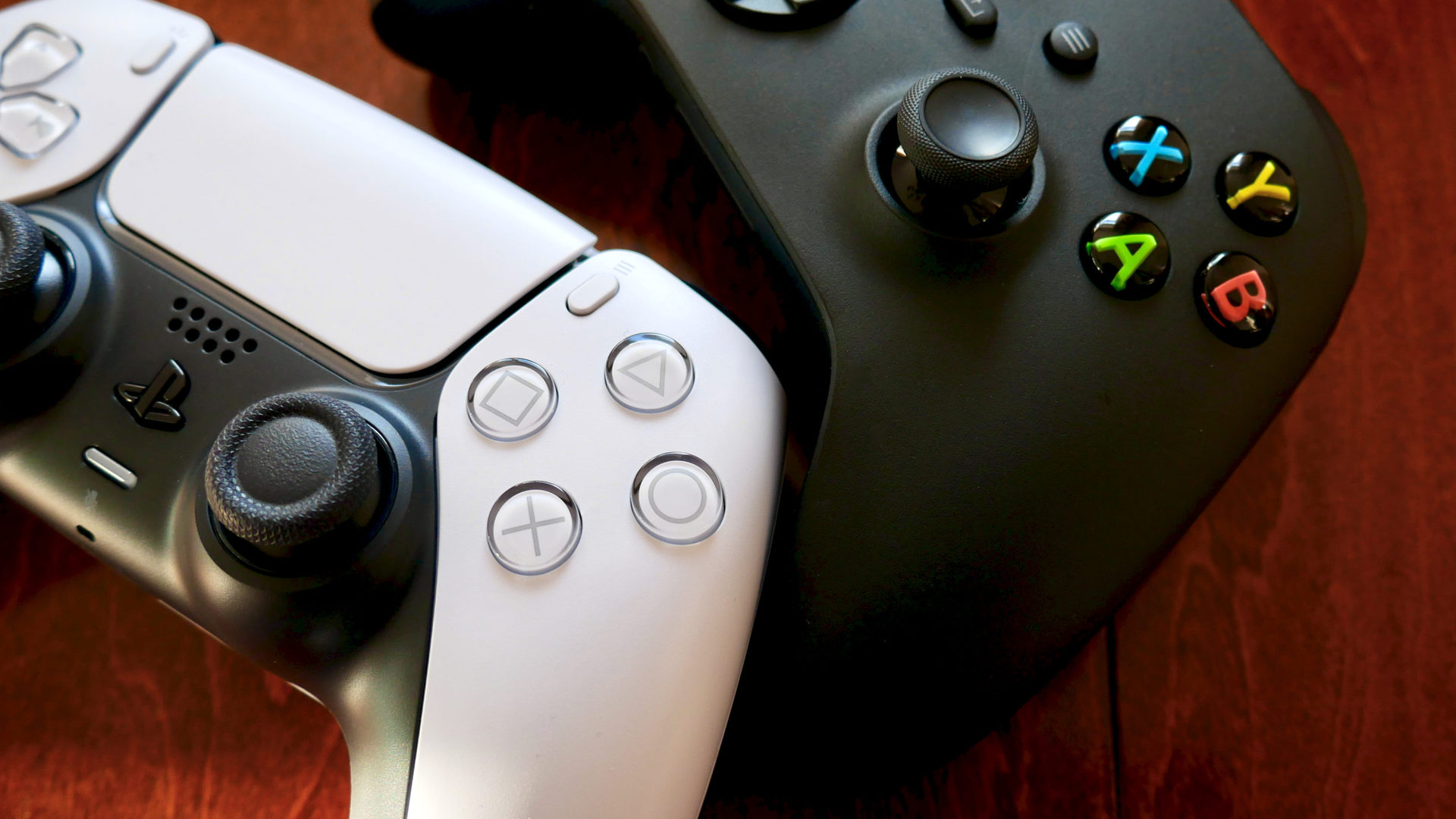
The contrasting design ethos of the PS5 and Xbox Series X extends to the controllers. While the Xbox Wireless Controller and the DualSense Wireless Controller are functionally identical, Sony saw the new generation as an opportunity to rethink how a gamepad can enhance gameplay.
Let’s start with the basics. Both controllers have two thumbsticks, four face buttons (a continuation of the shapes vs letters battle for supremacy), and a 3.5mm headphone jack. The D-pads are slightly different. The DualSense rocks a split four-button pad, and the Xbox controller packs a hybrid D-pad with a cross pattern and rounded diagonals. I prefer the feel of the Xbox D-pad, but its loud clicks can be distracting. Both controllers also have two bumpers, two triggers, and a top-mounted USB-C port.
As for custom buttons, the DualSense mirrors its predecessor — the DualShock 4. It offers a PlayStation button, a share button (now a tad pretentiously dubbed “Create”) for capturing screenshots and video, and an options button. There’s also the touchpad which can act as two additional buttons by clicking either side. However, it’s mainly there for touch-sensitive games. It also lights up around the sides. Very funky.
Meanwhile, the Xbox controller finally adds its own share button in addition to the usual Xbox, Menu, and View buttons on the front. There’s also an expansion port on the bottom for accessories. That includes an optional Play and Charge Kit because, yes, the Series X gamepad takes AA batteries. You may disagree, but I’d take a rechargeable gamepad over replacing batteries or having to buy a recharging accessory any day.
There are subtle differences between the two as far as ergonomics goes. The Xbox controller has a heavy texturing effect around the rear and the triggers. The DualSense copies this approach, but it’s not quite as tangible in hand. Likewise, the DualSense feels wider due to the almost boomerang-like build. The Xbox pad, on the other hand, is more compact and acute with its angles.
However, there are some notable upgrades that the PS5 pad boasts when compared with the Xbox controller. This includes DualShock 4 carryovers such as a gyroscope for motion controls, a built-in speaker and mic, and the aforementioned touchpad. Yet, these all pale in comparison to the two biggest advantages: advanced haptics and adaptive triggers.
There's only one controller that's truly pushing gaming forward.
Put simply, the DualSense controller’s haptics are magical. One of my colleagues already waxed lyrical about them, and I echo his sentiments completely. Actually feeling the clang of metal as your sword bounces off a shield in Demon’s Souls never gets old. It’s so far beyond traditional rumble that you can differentiate between walking on sand, glass, and other surfaces in ASTRO’s Playroom. It’s a short, free title that comes with every PS5 that’s essentially a tech demo for the DualSense’s best features. Speaking of which, the adaptive triggers are equally impressive. These can resist your finger pull based on the contextual action on the screen, further heightening your immersion.
It’ll be fascinating to see (and feel) how Sony’s first-party studios take advantage of the DualSense’s quirks. However, there’s no guarantee that all big third-party developers will take as much care. For example, the rumble in Assassin’s Creed: Valhalla is near-identical across both the PS5 and Series X.
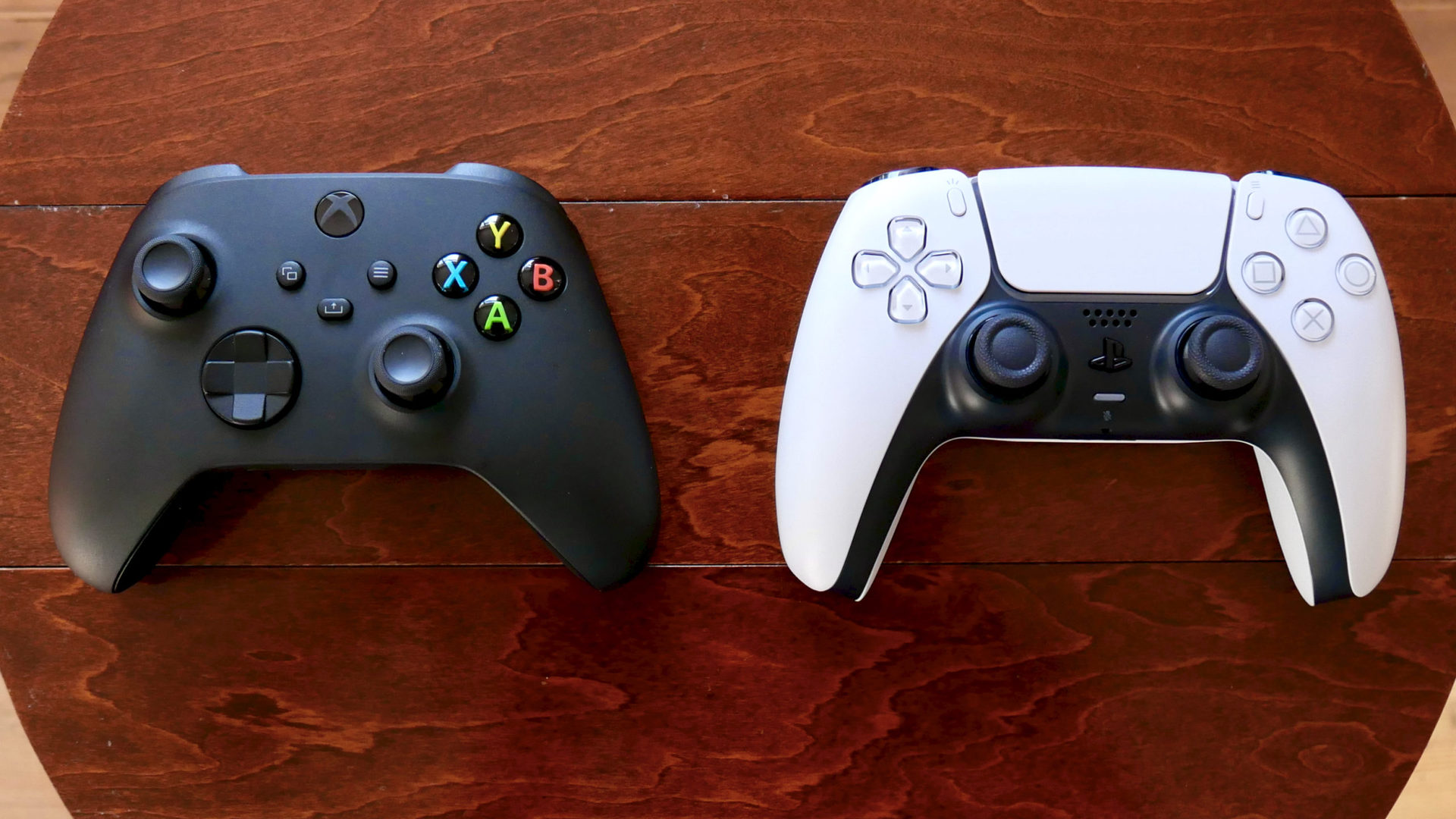
The Series X controller isn’t bad. In fact, it builds on previous Xbox controllers very well. Plus, Microsoft’s iterative approach means that Xbox One gamepads will work on the Series X for all games. Meanwhile, DualShock 4 pads are compatible with the PS5 for playing PS4 titles, but PS5 games are DualSense-only.
Nevertheless, there’s only one controller here that’s truly pushing the envelope, and it has to be the DualSense.
PS5 vs Xbox series X: Performance
The raw specs for both systems show how much closer the new-generation hardware is to PC gaming than we’ve ever seen before.
The Series X is powered by a custom AMD eight-core Zen 2 CPU (3.8GHz peak) and AMD’s Navi-based RDNA 2 graphics chip, with a meaty 12 teraflops of GPU power. This is paired with 16GB of RAM (GDDR6) and a custom 1TB NVMe SSD designed around Microsoft’s Velocity Architecture.
The PS5 SoC, by comparison, utilizes the same 8x Zen 2 CPU setup but clocked at 3.5GHz. The GPU architecture again mirrors the Series X but drops to 10.28 teraflops. In addition, while the RAM matches the Series X, the PS5 has a custom 825GB SSD.
Before we dive into the murky waters of frame rates, resolution, and more, let’s make something very clear: both the Xbox Series and PS5 are the most powerful home consoles ever to hit the market. It’s also true that, on paper, the Series X has a higher theoretical peak performance than the PS5. However, the actual results based on our own testing and other experts have been mixed so far.
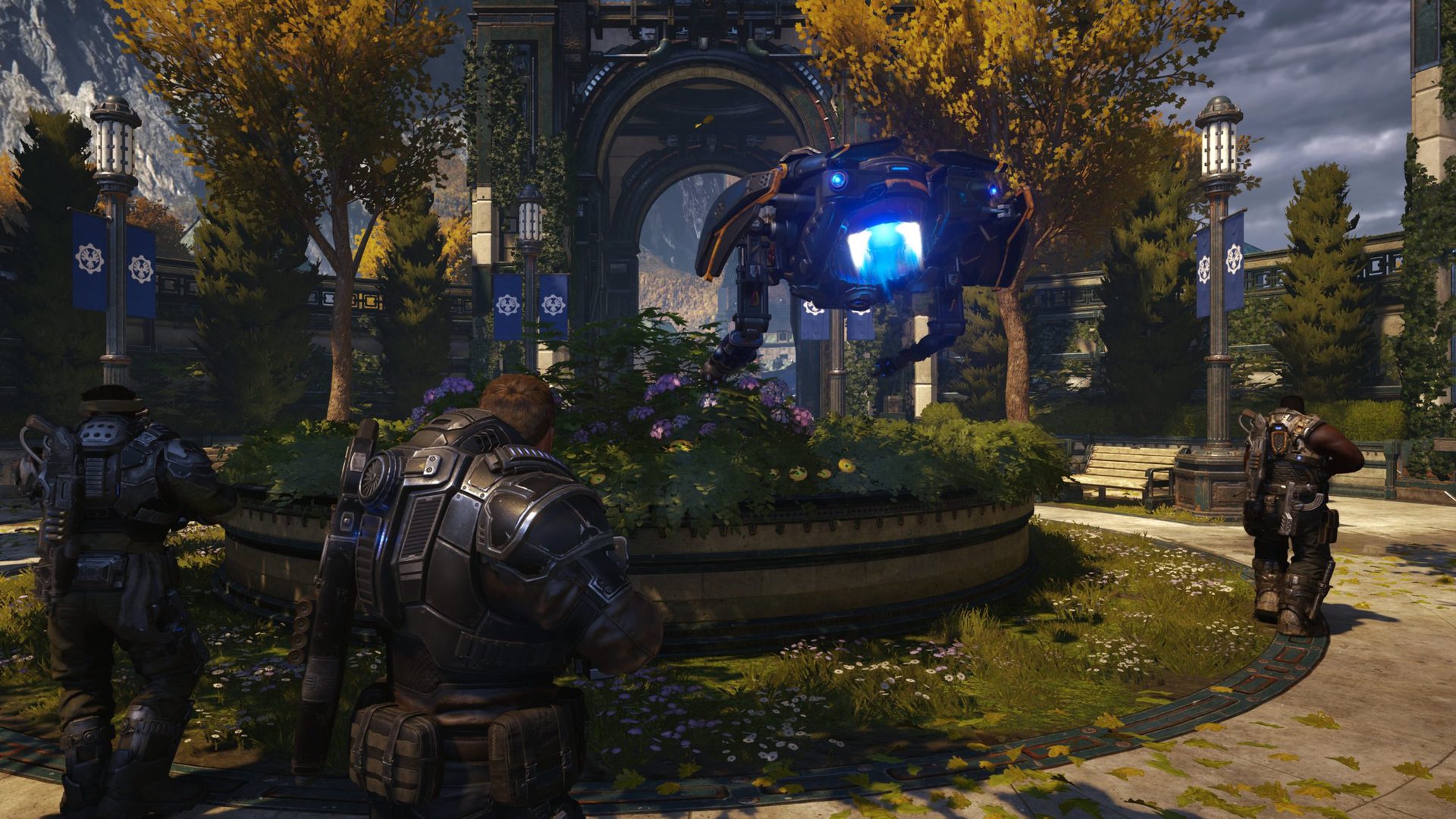
Multi-platform games like Devil May Cry 5 Special Edition and Assassin’s Creed Valhalla both exhibit frame rate dips on the Xbox Series X. The latter suffers from excessive screen tearing in cutscenes (a recent patch has fixed this for some, but I still see it quite often). In addition, Devil May Cry 5 has a quality mode with ray-tracing enabled on PS5, while the Series X… doesn’t. Other games, like Call of Duty: Black Ops Cold War, deliver a better experience on Series X as expected. Of course, it’s still early. Third-party studios are still getting to grips with all the new hardware.
Things are a lot more even when looking at first-party games or, in the case of the Series X, Xbox One games that have been optimized for Series X and Series S. This includes Gears 5, which is as close to a full display of what the Series X is capable of as you can get right now. The Coalition’s gory shooter features up to 2160p dynamic resolution scaling. It’s further enhanced with ray-tracing lighting and reflections, gorgeous auto HDR, a 60fps-locked campaign, and up to 120fps in multiplayer.

The PS5, meanwhile, has a number of exclusives that show off its hardware. Demon’s Souls and Spider-Man: Miles Morales are the two big hitters. Both can run in native 4K quality mode with ray-tracing at a capped 30fps or in performance mode at 60fps with a dynamic frame rate. Insomniac Games also patched in a Performance RT mode for Spider-Man: Miles Morales. It enables ray-tracing at 60fps, though with a further reduced resolution and fewer in-game objects such as traffic and pedestrians.
The PS5 and Series X both offer more ways to tune your graphics settings than any console to date.
Meanwhile, 120Hz support is mostly restricted to online multiplayer for games on both consoles. There are a few rare exceptions, but almost always with a trade-off of lower resolutions (to as low as 1080p) and the loss of enhanced lighting.
We’ll have to wait and see how much power truly lurks under the hood of both systems. The reality is that it usually takes months, if not years, for first-party developers to truly push console hardware to its limits. Regardless, there’s already a pattern emerging that you’ll need to choose between performance and quality options, no matter which platform you pick. This has been a mainstay of the PC gaming market for years, and it’s great to finally have some flexibility in the console space too.
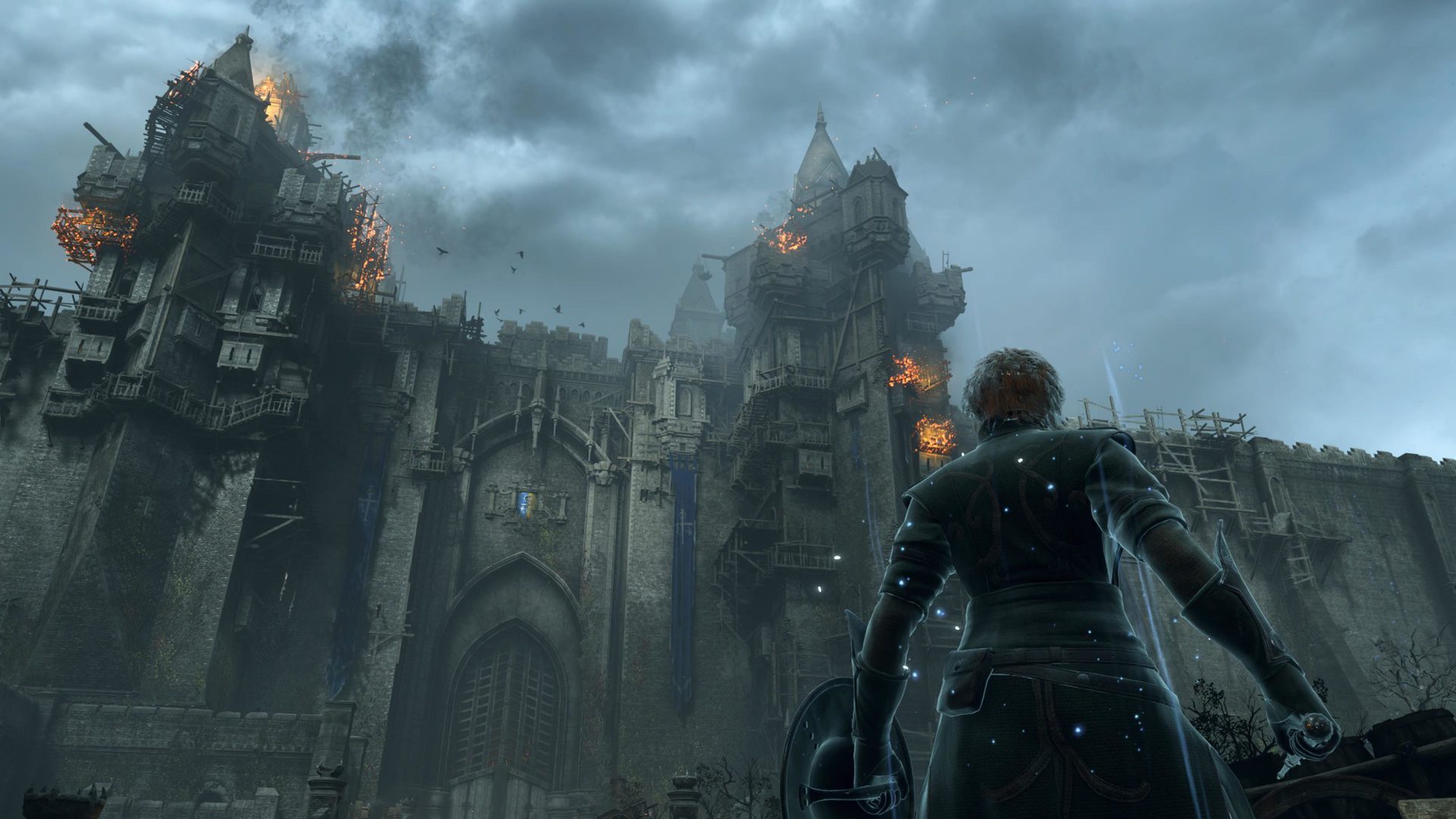
Despite the surprise early wins for PS5 vs Xbox Series X in performance, there are several areas where Microsoft’s machine has the firm upper hand. Notably, the PS5 doesn’t currently support variable refresh rates, which may come into play as more games attempt to push 120fps at higher resolutions. It also doesn’t offer native support for 1440p displays — a blow for those looking to hook the console up to a 120fps-enabled 1440p monitor. Sony has confirmed that VRR support will arrive in a future firmware update. It’s also hinted that native 1440p support could follow.
Of course, to take advantage of any of these advanced features, you’ll need a relatively new TV set. VRR and 120fps are only available with HDMI 2.1-equipped sets. So, if you’ve got a slightly older 4K TV, you may be out of luck. There’s also 8K support promised for both consoles in the future.
One thing you can enjoy on any TV or monitor is the ultra-fast loading offered by both the PS5 and Xbox Series X. Those custom SSDs are the real upgrades of the ninth-generation consoles. Load times — be it booting up a game or during gameplay — are absolutely rapid. Transitioning from the Nexus to Boletaria’s various deadly locales in Demon’s Souls takes seconds. So does zipping from one side of the map to the other in Assassin’s Creed Valhalla.
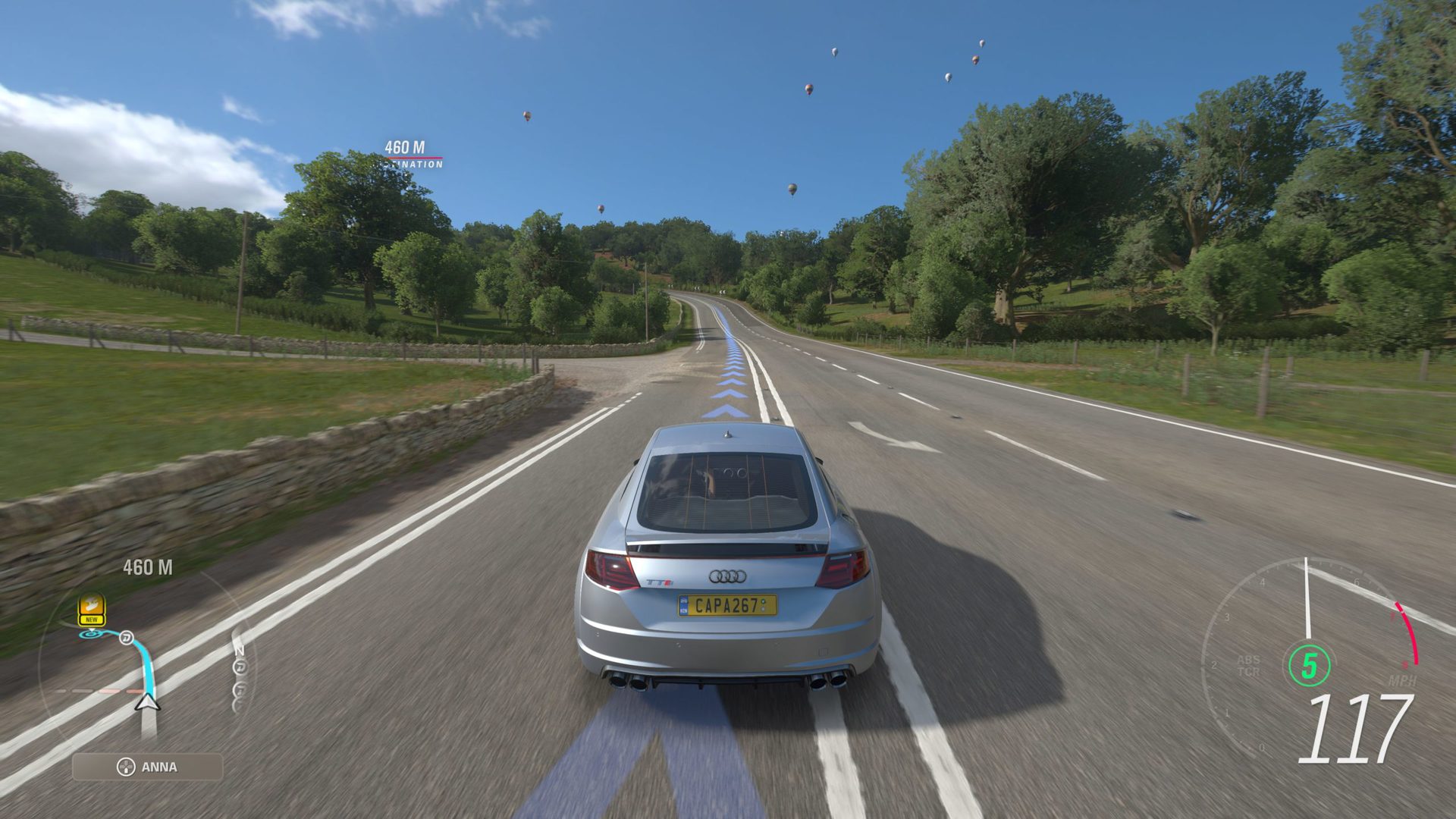
Going from standby to gameplay on either console is equally speedy. It’s even faster if you’re playing a Quick Resume-supported game on the Xbox Series X. This feature lets you suspend gameplay in up to around five games at once and flick between them without heading back to the title screen.
The downside of the SSDs is the added expense on the bill of materials. However, rather than radically increasing price tags, Sony and Microsoft have instead limited the base storage of each machine.
AAA games are getting huge, and the Series X's superior storage options are a big win for Xbox players.
The Xbox Series X comes with a 1TB SSD with 802GB of usable space. The PS5, on the other hand, drops to 825GB with only 667GB left after setup. With some games ballooning to 100GB and above, that’s not a lot of room to play with.
You can expand both systems — the Series X with custom cards and the PS5 with M2 sticks. At long last, you can buy m.2 SSD’s for the PS5 and use them as additional PS5 game downloads. With the $219 Seagate stick and $250 Samsung m.2 drive adding an additional 1TB to either console, you won’t need to worry too much about running out of space. You can play backwards compatible games on both consoles via an external drive, but not new-gen titles. In fact, only the Series X lets you copy optimized or new-gen games to an external drive.
Finally, the PS5 supports Wi-Fi 6, while the Xbox Series X does not. This means Sony’s console is more future-proofed for faster and more stable Wi-Fi connections.
Features and software

The Xbox Series X dashboard is nearly identical to the Xbox One’s UI. Microsoft gave its interface a fairly significant facelift back in August, so it’s not a surprise to see so few changes. Sony, meanwhile, has crafted an entirely new interface. It introduces a litany of new, novel features and a somewhat minimalist look.
However, the PS5’s dashboard makes fairly poor use of space and is generally a bit clinical. That said, the revamped Control Center is a big upgrade over the PS4 UI. With a single push of the PlayStation button on the DualSense, you can access quick settings and features like party chat without exiting the game you’re playing. This is also where you’ll find Activity cards — a brand new feature that provides in-game help and information on Trophy or level progress. It even lets you jump to specific levels or locations in-game. Support for Activities will vary, but it’s a handy option for first-party titles.
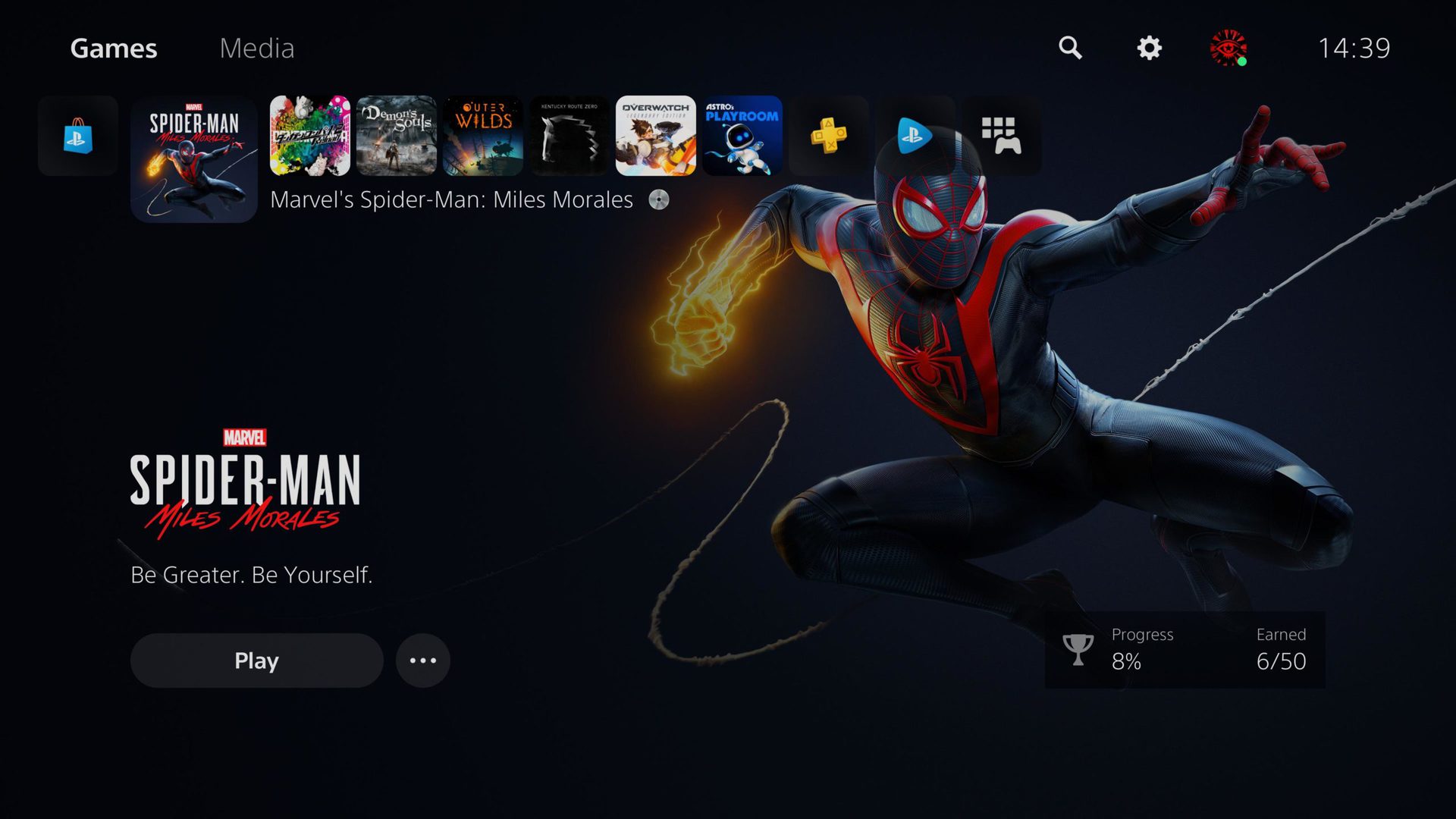
The PS5 UI also runs in 4K HDR, which can’t be said of the 1080p Xbox dashboard. This is a baffling decision and is quite jarring when transitioning between a game and the dashboard. Elsewhere it’s tiles, tiles, and more tiles. The Xbox Series X interface is perhaps a little overzealous in the way it pushes services like Game Pass, but it’s far more customizable than the PS5’s UI. There’s also a handy universal search feature in case you can’t find a specific setting.
Subscriptions
This one isn’t even close. Comparing Xbox Game Pass to any of Sony’s PlayStation services is a non-starter.
For those that need a refresher, Game Pass is a Netflix-style service that gives users access to a ton of games. That includes every Xbox Game Studios title at launch — starting from $9.99 a month. The highest tier — Game Pass Ultimate — goes a step further by bundling in Game Pass for PC (complete with its own unique library), cloud streaming to Android smartphones (and soon iOS), EA Play, and Xbox Live Gold, as well as other perks (like a month of Disney Plus), all for $14.99. Xbox Live Gold is essential if you want to play online and normally costs $9.99 a month on its own.
Sony’s Game Pass rival is currently PlayStation Plus. It performs the same role as Xbox Live Gold on Microsoft’s consoles by enabling online play, starting at $9.99 a month or $59.99 for a whole year. There are three tiers to PS Plus, giving you access to monthly games and larger game libraries. PlayStation Plus Essential starts at $9.99 a month, PlayStation Plus Extra starts at $14.99 a month, and PlayStation Plus Premium starts at $17.99 a month. However, you can save up to 50% by buying three or twelve months at a time.
PlayStation Plus Extra gives you access to over 400 PS4 and PS5 downloadable games, including Death Stranding, Marvel’s Spider-Man, Mortal Kombat 11, Returnal, and more. The $15 monthly fee is the same as Xbox Game Pass Ultimate, which offers far more for the money, but the annual plan works out to just over $8 a month. Microsoft offers no competing 12-month plan that can match those prices.
PlayStation Plus Premium grants you access to a library of PS3 games available for cloud streaming and a classics catalog of PS1 and PS2 games to download. It runs 20% more expensive on both the monthly and annual plans and the added value is questionable at best. Unless you love older PlayStation games, you’re probably better off sticking with the middle tier.
PS Plus is better than it was, but Xbox Game Pass is on another level.
Also, like Xbox Live Gold, you get a handful of “free” games every month with each PS Plus tier. However, PS5 owners get an extra perk with the PS Plus Collection — a complimentary library of 20 games from the PS4 generation, including modern classics like Bloodborne, God of War, Persona 5, The Last of Us Remastered, and more.
The bonus PS Plus Collection is very welcome. There are plenty of games to lose yourself in between PS Plus and PS Now, but there’s no competition compared to Xbox Game Pass Ultimate. Microsoft is trouncing Sony in the subscription war. Put simply, Game Pass is the most compelling reason to buy into the Xbox ecosystem right now.
Apps
A pair of optional smartphone apps complement each console. There are technically more than two available for each, but these are the ones that make the best use of either console. On the PlayStation side, you’ve got the core PlayStation App and PlayStation Remote Play. Meanwhile, on the green side, there’s the Xbox app and Xbox Game Pass.
The primary PlayStation and Xbox apps are fairly straightforward and offer similar functionality. This includes an overview of your game library, profile settings, remote downloads, messaging, and more. The PS App also lets you browse and buy games from the PlayStation Store.
The Xbox app’s unique feature is a tab for captures which is populated by screenshots and video taken on your console. You can then download these easily to your phone’s device storage. The Xbox app is also handy during the initial console setup — Sony should copy this immediately.
However, the Xbox app is a little more clumsy with its layout compared to PlayStation’s companion app. For example, the remote play feature is hidden under an otherwise innocuous tab with an Xbox One icon. Sony goes completely the other way and pushes remote play into an entirely separate app. It’s all very arbitrary, much like the Xbox Game Pass app. This shows all the Game Pass games across PC, console, and mobile. Perhaps this needed to be a standalone app to support cloud streaming. If that’s not the case, I’m not sure why this couldn’t have just all been added to the main Xbox app as an additional tab.
Media, audio, and screenshots
Both the PS5 and Xbox Series X are packed with media features. This includes a 4K Blu-Ray player unless you opted for the disc-free PS5 Digital Edition. On the app front, all the favorites are here. You’ll find Netflix, Amazon Prime Video, Hulu, Disney Plus, YouTube, Spotify, Twitch, and more. While HBO Max was not available on the PS5 at launch, it has since made its debut at the very end of 2020. Dolby Vision HDR for streaming is similarly an Xbox-only affair, though it isn’t supported for 4K Blu-Rays.
The Xbox Series X also supports Google Assistant and Amazon Alexa. That means you can control media playback, turn the console on or off, take a screenshot, and more via a compatible smart speaker. The PS5 sadly doesn’t have either.
What it does have is Sony’s proprietary Tempest 3D AudioTech. This is designed to deliver virtual object-based spatial surround sound over headphones. Sony also says Tempest 3D audio will eventually come to TV speakers. Right now, you can sample it through any pair of decent cans or the custom-tuned PS5 Pulse 3D wireless headset.
The PS5 uses its own proprietary 3D audio tech. The Xbox Series X opts for Dolby Atmos support.
The Xbox Series X opts for Dolby Atmos 3D surround sound support for streaming and 4K Blu-Ray playback, selected games, as well as the rival DTS:X codec. The PS5 technically supports Dolby Atmos and DTS:X, but only for Blu-Rays and 4K Blu-Rays via the optical drive.
As for media capture, the Xbox Series X can grab screenshots in 4K and video at 4K HDR for up to 30 seconds or lower resolutions for a maximum of three minutes. The PS5 mirrors the capture quality, but the duration caps out at a whopping 60 minutes.
VR
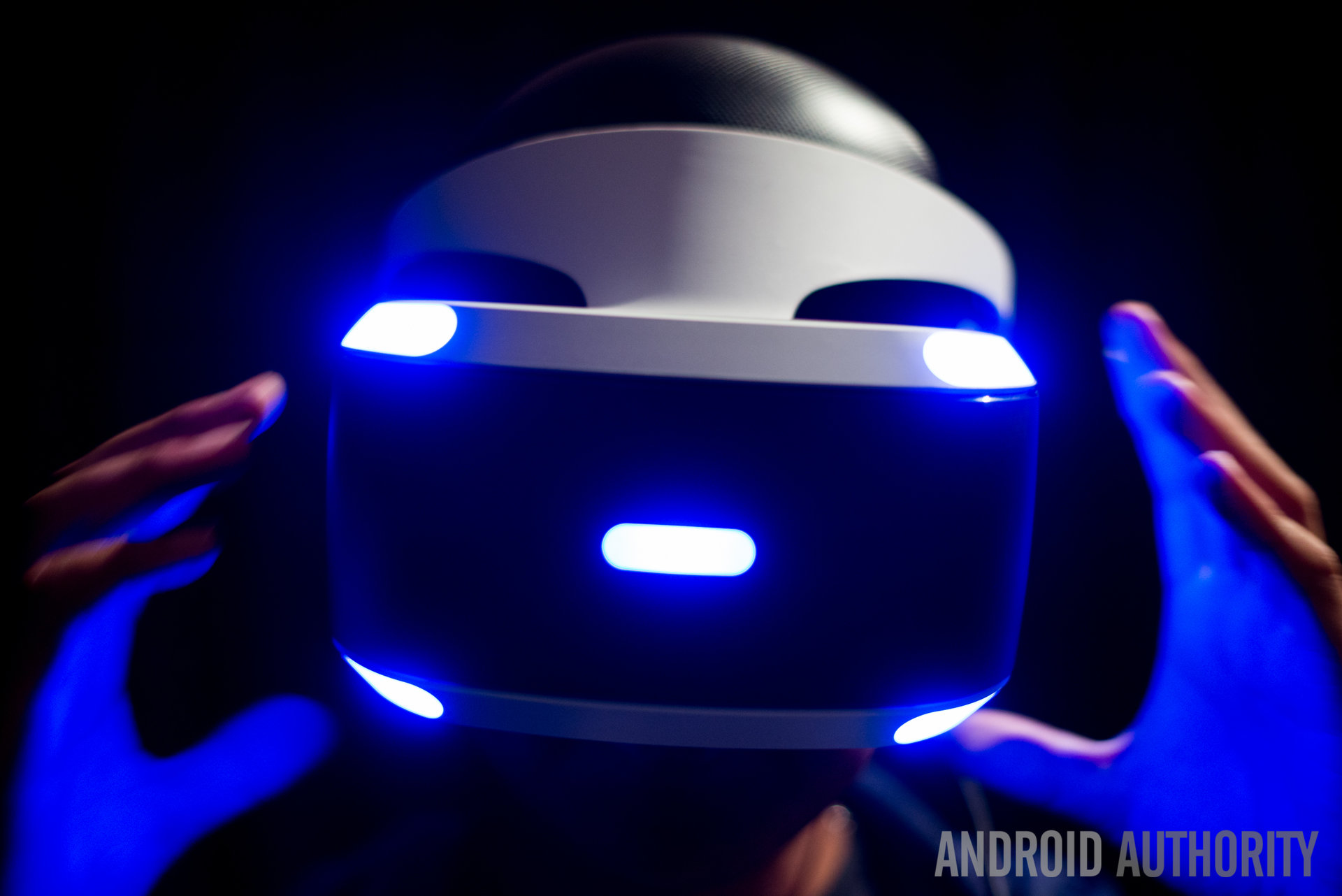
Virtual reality is still a niche interest in the console space, but the PS5 is fully compatible with Sony’s PlayStation VR headset. To use it, you’ll need the PSVR itself, the PS4 Camera, and a PlayStation Camera adaptor which is available for free to existing PSVR owners. The new PS5 camera is not compatible, but existing PSVR accessories like the PlayStation Move remotes and the Aim Controller will work just fine. There are some great games available for the platform, but here’s hoping Sony release a new PlayStation VR headset soon. Some of the peripherals here are now based on tech that’s over 10 years old.
Microsoft has shown zero interest in bringing VR experiences to its consoles so far. Don’t hold out too much hope for an Xbox VR headset anytime soon.
PS5 vs Xbox series X: Games
Great consoles need great games. The PS5 and Xbox Series X have plenty of them. However, since its launch, only one has rapidly expanded its catalog of exclusives — and that’s Sony’s console.
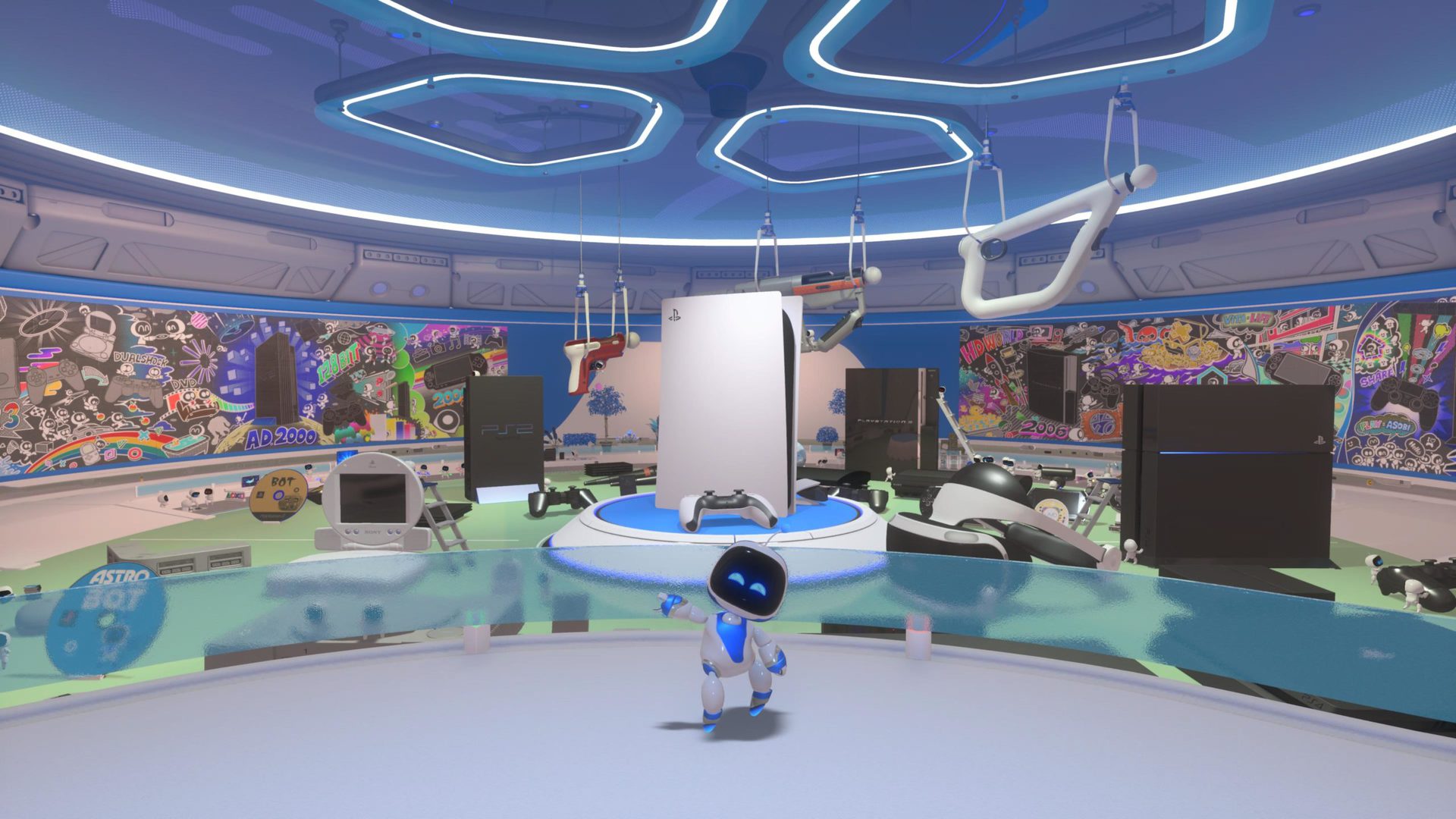
The PS5’s launch lineup is arguably one of the best game libraries for several generations from a company not named Nintendo. Demon’s Souls is a sumptuous remake of a brutal PS3 masterpiece. ASTRO’s Playroom (bundled free with every PS5) is the most Nintendo game that Nintendo didn’t make. It’s also the perfect showcase for the DualSense. There’s also Spider-Man: Miles Morales, a short but sweet spin-off of Marvel’s Spider-Man on PS4, the artful open-world adventure The Pathless, the bizarre and infectious Bugsnax, and the return of Sony’s de facto mascot in Sackboy: A Big Adventure.
Conversely, the Xbox Series X has one of the weakest line-ups in recent memory. Unfortunately, the untimely delay of the planned launch title Halo Infinite left a massive, unfillable hole in the Series X’s launch library. The closest thing to a brand-new exclusive game is Yakuza: Like A Dragon. However, that, too, will eventually make its way to other platforms in 2021.
Instead, Microsoft relies on its Series X/S optimized games from the Xbox One generation to grab your attention. If you haven’t played the likes of Gears 5, Forza Horizon 4, Sea of Thieves, or Halo 5: Guardians yet, you’ll have a wealth of top titles to enjoy. This is especially true of the criminally underrated Gears 5, a bravura showcase for the Series X’s power. If you have played these games before, however, you’ll be looking to high-profile third-party games like Assassin’s Creed Valhalla and Call of Duty: Black Ops Cold War for your fresh AAA thrill —games that are also available on PS5.
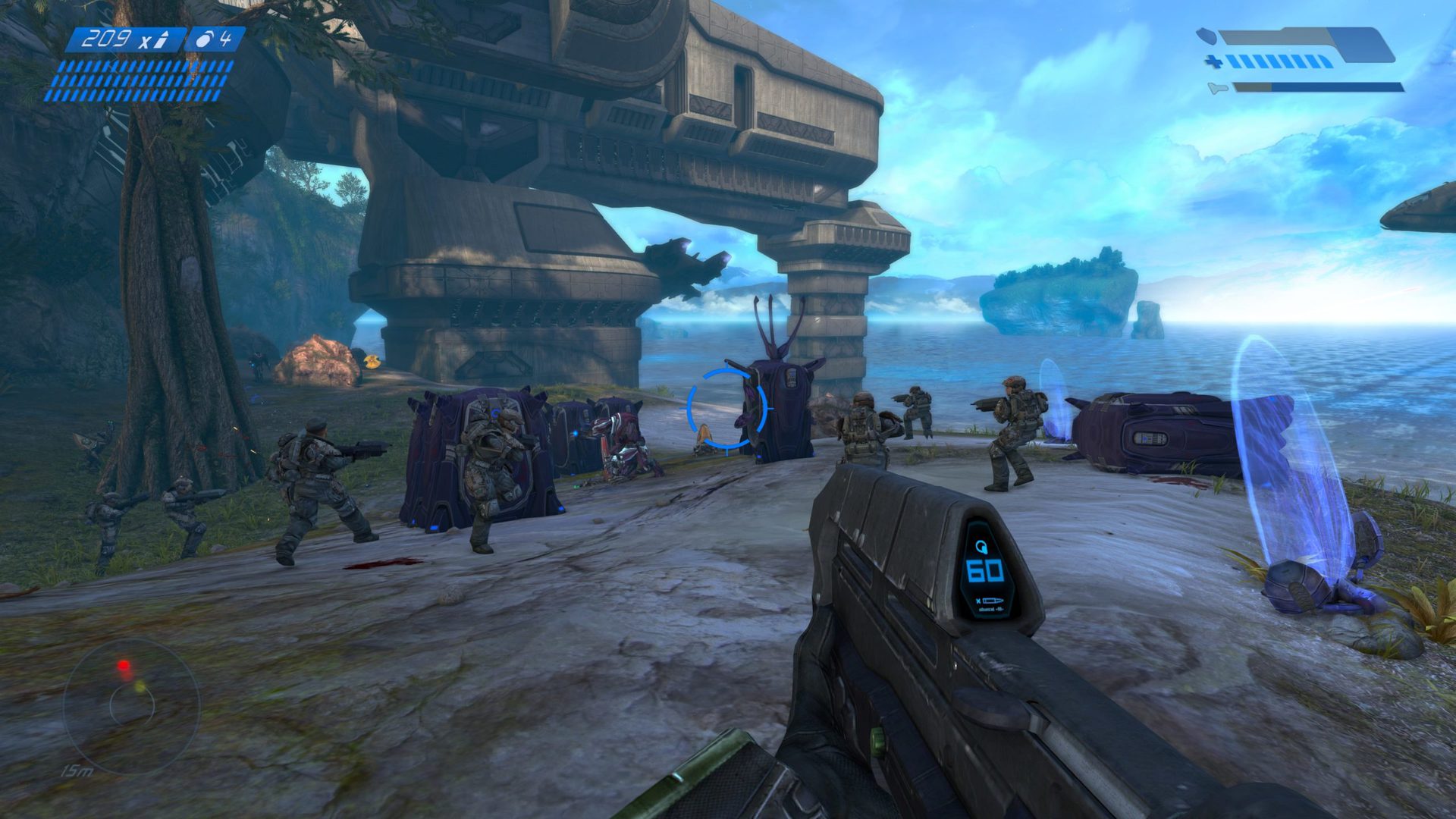
Thankfully, it seems extremely likely that Microsoft’s big black box will soon compete with PlayStation on the exclusives front. The Redmond giant has snapped up a bunch of talented studios over the past few years. That includes the shock acquisition of The Elder Scrolls and Fallout from Bethesda Game Studios, plus the rest of the ZeniMax family. Sony’s PlayStation Studios is equally packed with talent, with The Last of Us and Uncharted developer Naughty Dog arguably the jewel in its crown.
The PS5 has more new and exciting exclusives now and coming in the near future.
The immediate future looks a little brighter for PlayStation players, with Horizon Forbidden West, Ratchet and Clank: Rift Apart, Deathloop, the sequel to 2018’s God of War, Ghostwire: Tokyo, Returnal, Disco Elysium: The Final Cut, Stray, and more, all launching as console exclusives or timed exclusives on the PS5. Xbox Series X owners have to look a little further beyond 2021 for the likes of Senua’s Saga: Hellblade 2, Everwild, Avowed, the Perfect Dark reboot, and the long-awaited Fable sequel. There are some highlights on the way, though. These include a Series X/S optimized Psychonauts 2 and the juggernaut that is Halo Infinite. These are both confirmed for a 2021 launch.
Of course, this one-sided fight only really applies if you’re interested in exclusive games. If you care more about big hitters from third-party publishers and developers, the allure of the Xbox Game Pass is extremely strong. Right now, the Game Pass library is stacked with amazing games — from hidden indie gems to blockbusters — that span a wealth of different genres. Check out the full list on Microsoft’s website here.
Thanks to Game Pass, Series X is a better console for multi-platform and retro gaming.
There’s also no doubt that the Xbox is still lightyears ahead of PlayStation with support for backward compatibility. The PS5 finally sees Sony embracing the feature with near-complete support for the massive PS4 library, but the Series X can go back three whole generations and play original Xbox games. Not only that, but the Series X will apply auto HDR effects to every backward-compatible game.
However, it’s great to see both platforms push unlocked frame rates, even in unoptimized titles, up to 60fps where possible.
PS5 vs Xbox series X: Specs
| PlayStation 5 | Xbox Series X | |
|---|---|---|
CPU | PlayStation 5 8x cores @ 3.5GHz w/ SMT Custom Zen 2 CPU 7nm | Xbox Series X 8x cores @ 3.8GHz (3.66GHz w/ SMT) Custom Zen 2 CPU 7nm |
GPU | PlayStation 5 10.28 TFLOPS, 36 CUs @2.23GHz Custom RDNA 2 GPU | Xbox Series X 12 TFLOPS, 52 CUs @1.825GHz Custom RDNA 2 GPU |
RAM | PlayStation 5 16GB GDDR6 | Xbox Series X 16GB GDDR6 |
Storage | PlayStation 5 825GB Custom NVMe SSD | Xbox Series X 1TB Custom NVMe SSD |
Resolution and frame rate | PlayStation 5 4K (2160p) at up to 120fps | Xbox Series X 4K (2160p) at up to 120fps |
Optical disk drive | PlayStation 5 4K UHD Blu-Ray drive (standard PS5 only) | Xbox Series X 4K UHD Blu-Ray drive |
Audio | PlayStation 5 "Tempest" 3D AudioTech Dolby TrueHD Up to 7.1 L-PCM Dolby Atmos/DTS:X (Blu-ray only) | Xbox Series X Dolby Digital 5.1 DTS 5.1 Dolby True HD with Atmos DTS:X Up to 7.1 L-PCM |
Ports | PlayStation 5 1x HDMI 2.1 3x USB 3.1 1x USB-C Wireless 802.11ax Ethernet 802.3 10/100/1000 | Xbox Series X 1x HDMI 2.1 3x USB 3.1 Wireless 802.11ac dual band Ethernet 802.3 10/100/1000 |
Dimensions | PlayStation 5 Standard: 390mm x 104mm x 260mm 4.5kg Digital Edition: 390mm x 92mm x 260mm 3.9kg | Xbox Series X 151mm x 151mm x 301mm 4.5kg |
Price and release dates
- PlayStation 5 — $499/£449/€499
- Xbox Series X — $499/£449/€499
The Xbox Series X hit the global market first on November 10, 2020, priced at $499. This is the same price as the original Xbox One, which launched back in 2013, and the upgraded Xbox One X, which arrived in late 2017.
The PlayStation 5 release date came to a couple of days later, on November 12, 2020, in North America and other selected markets. It arrived later still for the rest of the world on November 19. The PS5 matches the Xbox Series X’s $499 price tag. This represents a $100 hike over the PS4 in 2013 and the PS4 Pro in late 2016, both of which originally retailed for $399.
If you can stomach sacrificing a disc drive, then the PS5 Digital Edition has the same specs as the regular PlayStation 5 and is priced at $399. It’s a similar situation for the $299 Xbox Series S, though Microsoft’s digital-only console cuts back further on specs. Check out our review for more on the Series S.
PS5 vs Xbox Series X: The verdict
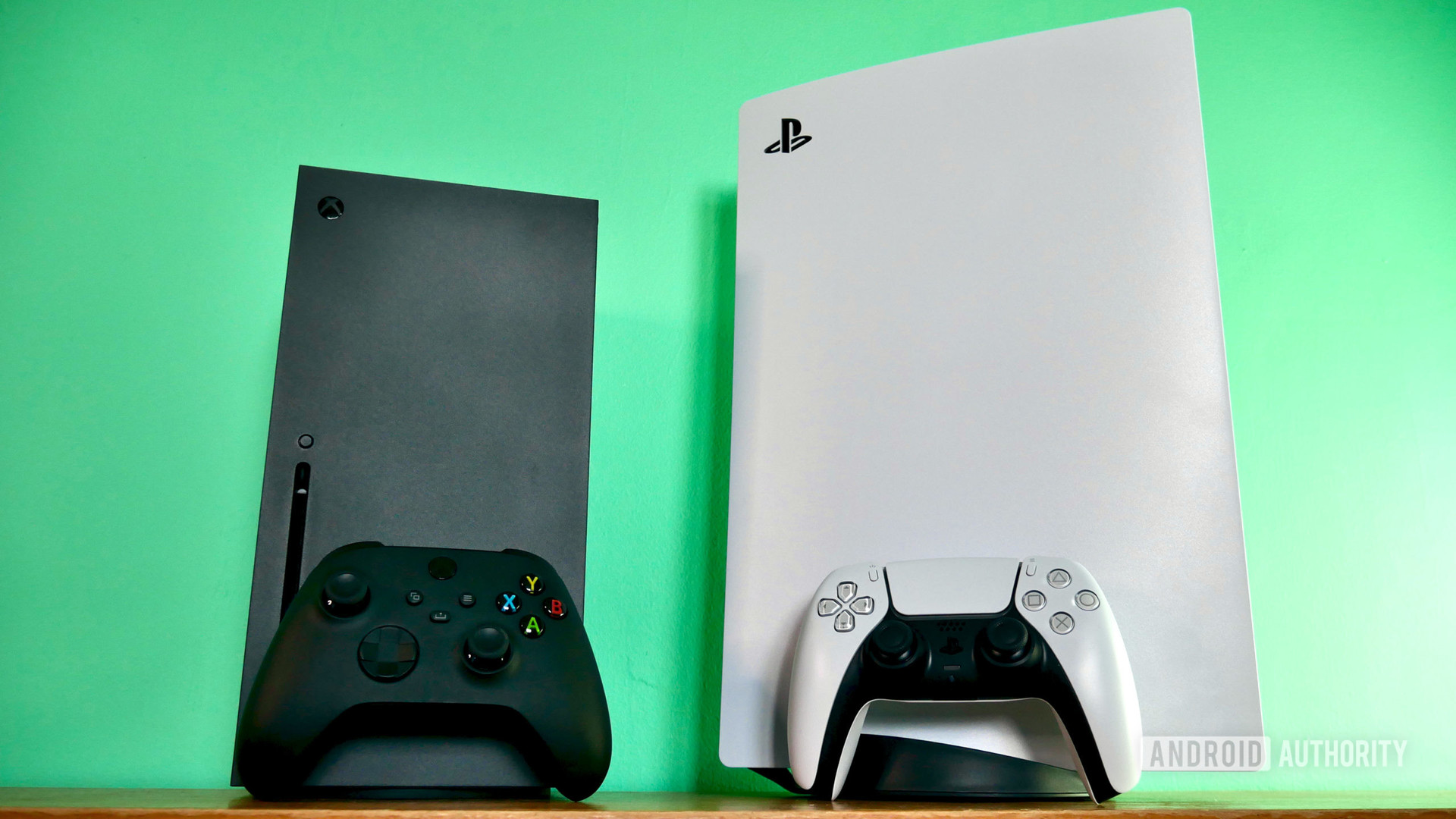
Looking just at the specs, you’d be forgiven for thinking that comparing the PS5 and Xbox Series X is a moot point. Stripped down to only the essentials, there’s more that unites Sony and Microsoft’s ninth-gen duo than divides it. They both boast enough raw CPU and GPU power to push more frames and higher resolutions than we’ve ever seen without requiring at least a modestly kitted-out gaming PC. They both feature blazing-fast custom SSD drives that obliterate the concept of load times and reduce the wait between tedious menus and gameplay to mere seconds.
Instead, the biggest difference between these two behemoths is in their competing philosophies.
The PS5 is a monument to console cycles and the idea that a generational leap has to deliver on the wow factor. This manifests in its ostentatious design that’s a world away from the angular PS4. There’s also the immediate pleasure you get from trying the DualSense for the first time and those flashy, hardware-pushing exclusives that are available from day one. It’s even there in the smaller details, like with the revamped UI and apps. Sony’s console wants to show you something new.
The Xbox Series X pivots in the complete opposite direction. It’s a bold but also understated matte black cuboid. The console launched with very few games that come anywhere close to showcasing its simmering brute strength, let alone anything you can’t experience elsewhere. It’s not just the games, either. The dashboard and the controller (especially if you’re using an old Xbox One pad) will elicit feelings of deja vu for any recent Xbox user. The Series X stubbornly refuses to play the generation game. What it does have, however, is vision.
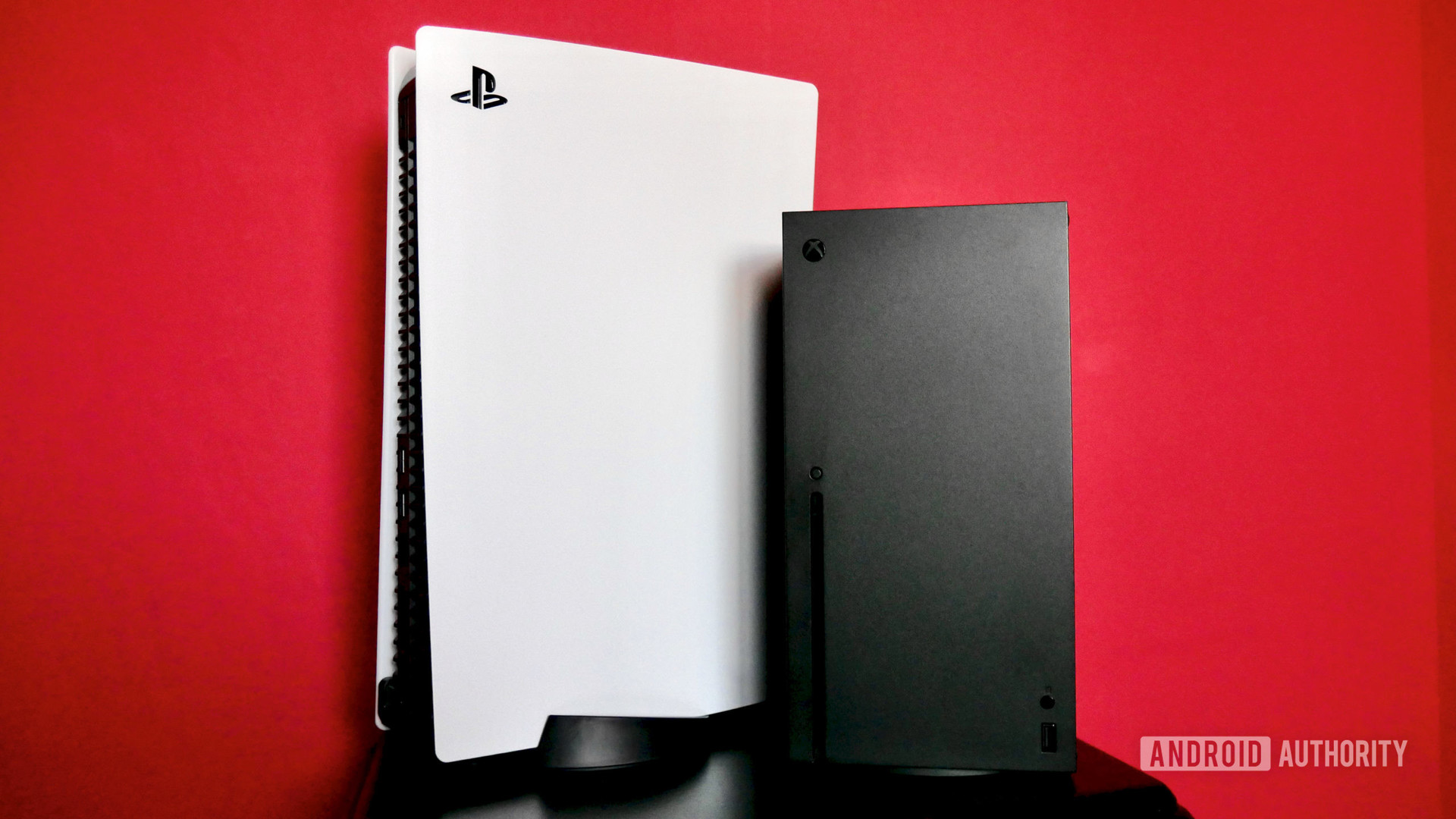
The PS4/Xbox One era was the longest in video game history. With future-proofing inside both machines, it seems inevitable that the PS5/XSX generation will at least match or even surpass those eight long years. In that time, the shape of the gaming landscape is expected to morph as cloud gaming, subscription services, and cross-platform support become more prominent. Right now, the Xbox is leading on all three of these fronts by quite some margin. Sony could up its game, but if you’re more interested in investing $500+ after subscriptions on a stable, ambitious ecosystem over the (admittedly attractive) desire for instant gratification, the Xbox Series X is the way to go. Of course, if you’re looking to save even more cash and don’t mind losing some processing grunt and a disc drive, you might want to consider the Xbox Series S instead.
With all that said, the PS5 is arguably a more attractive prospect right now. While the growing Xbox Game Studios family could well kickstart a new wave of modern classics for the green brand, Sony’s stable of developers has proved its pedigree over the past few years. Throw in the wonder of the DualSense controller and the superior selection of games from Japanese developers — a persistent weak spot for the Xbox brand —and there are plenty of reasons to pick up a PlayStation 5.
PS5 vs Xbox Series X: Which is the better buy?
Buying any console in the first few months following a launch is a gamble. The PS5 appears to be primed for greater short-term success after becoming officially the fastest-selling console of all time. I’d also be lying if I said I haven’t enjoyed playing games on the PS5 more than I have the Xbox Series X. The DualSense really does make a difference. Yet, I also can’t deny that if you don’t care about new exclusive games (a big if) and don’t already own a competent gaming PC (where almost all of the Xbox exclusives are fully playable), the Series X represents incredible value alongside an Xbox Game Pass subscription.
The bottom line is that the PS5 and Xbox Series X are incredible consoles that ooze potential. Regardless of the contrasting strategies, they are equally laser-focused on making console gaming the best it’s ever been.
